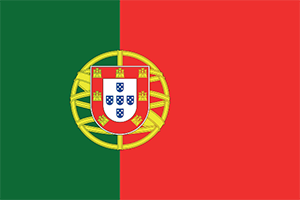Portugal - Country Background Information
- Describing the forms of education in the country
- Identifying an ‘inclusive setting’ in the country
- What an ‘official decision of SEN’ means in the country
- What ‘out-of-education’ means in the country
The EASIE data collection covers all recognised forms of education at ISCED levels 02, 1, 2 and 3. This means any type of education organised by or approved by any recognised educational provider in the public or private sector: municipality, local or regional educational provider from the public or private sector, working with/for ministries responsible for education and areas such as health, social, welfare, labour, justice, etc.
The compulsory age range in Portugal is from 6 to 18 years old.
What are the typical age ranges for the ISCED levels?
| ISCED LEVEL 02 | ISCED LEVEL 1 | ISCED LEVEL 2 | ISCED LEVEL 3 |
|---|---|---|---|
| 3–5 | 6–11 | 12–14 | 15–17 |
In Portugal, private schools mean they are promoted, controlled and managed by private entities, with pedagogical and scientific supervision by the Ministry of Education:
- Dependent private education - Private education whose central funding is supported 50% or more by public entities, or whose teaching staff are paid by a government body
- Independent private education - Private education whose central funding is supported 50% or less by public entities, or whose teaching staff are not paid by a government body.
In Portugal, home schooling is only available to respond to families who, for strictly personal or professional mobility reasons, wish to take on greater responsibility for their children's education, opting to develop the educational process outside the school context. The freedom of parents who opt for these education systems is thus guaranteed, as well as flexibility and adaptation to the pace of development of the learning of each child and young person.
According to Decree-Law no. 70/2021 of 3 August:
- ‘Home schooling' takes place in the learner's home, taught by a family member or by a person who lives with them;
- ‘One-to-one teaching' is teaching by a qualified teacher to a single learner outside an educational establishment.
According to decree-law 70/2021, 3 August, articles 18 and 19, learners have a portfolio to make and discuss their learning and its evolution.
The completion of each ISCED level depends on carrying out a successful exam:
- ISCED 1 and 2 – exams at the school level
- ISCED 3 – national examinations.
In the EASIE data collection, an inclusive setting is operationally defined as:
A recognised form of education where the child/learner follows education in mainstream classes alongside their peers for the largest part – 80% or more – of the school week.
The 80% time placement benchmark clearly indicates that a child/learner is educated in a mainstream class for the majority of their school week. At the same time, it acknowledges possibilities for small group or one-to-one withdrawal for limited periods of time (i.e. 20% or one day a week).
Very few participating countries can provide exact data on children/learners spending 80% of their time in a mainstream group/class. However, all countries can apply one of three agreed proxies that provide an approximation to this benchmark:
- Placement in a mainstream class implies over 80% or more.
- Data is available on the number of hours of support allocated to a child/learner.
- Placement in a mainstream class implies over 50% or more.
In the EASIE data collection, the agreed operational definition is:
An official decision leads to a child/learner being recognised as eligible for additional educational support to meet their learning needs.
Countries may have different types of official decision, but for all official decisions:
- There has been some form of educational assessment procedure involving different people. This procedure may involve the child/learner, parents, school-based team members, as well as professionals from multi-disciplinary teams from outside the child’s/learner’s (pre-)school.
- There is some form of legal document (plan/programme, etc.) that describes the support the child/learner is eligible to receive, which is used as the basis for decision-making.
- There is some form of regular review process of the child/learner’s needs, progress and support.
Within the EASIE data collection, specific questions examine children/learners who are out of education. This means children/learners who should, by law, be in some form of recognised education, but who are out of any form of recognised education. A recognised form of education is any type of education organised by or approved by any recognised educational provider in the public or private sector.
